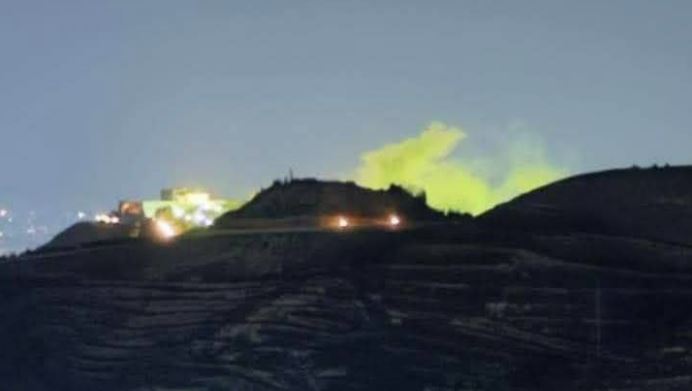Israeli Airstrike Targets Site Near Damascus Presidential Palace Amid Tensions Over Druze Security
By Kardo Roj
DAMASCUS, Syria (North Press) – In the early hours of Friday, Israeli warplanes carried out a rare airstrike near the presidential palace in Damascus, Syria’s capital, intensifying tensions between Israel and the Syrian government over recent violence in Druze-populated areas of southern Syria.
According to official Israeli sources cited by national broadcaster Kan, the strike was a direct response to what Tel Aviv perceives as escalating threats against the Druze community in regions such as Suwayda, Jaramana, and Ashrafiyat Sahnaya. The Israeli leadership has repeatedly warned Damascus against allowing violence to unfold in these areas, many of which have seen unrest and deadly clashes in recent days.
Israeli Prime Minister Benjamin Netanyahu and Defense Minister Yisrael Katz issued a joint statement on Friday: “We targeted a site near the presidential palace in Damascus. We will not allow any threat to the Druze community, nor the deployment of hostile forces south of the capital.”
No casualties have been officially reported following the strike, and Syrian state media has yet to comment in detail. However, the nature and proximity of the attack—close to one of the most secure and symbolic locations in the country—has drawn considerable attention and sparked speculation about potential retaliatory measures.
The Israeli strike marks a significant escalation in its engagement within Syria. While Israel has conducted hundreds of strikes in the country since 2011—mostly aimed at Iranian-aligned militias and weapons transfers—attacks near the core of Damascus’s power center remain relatively rare.
Analysts view this latest strike as both a military and political message. It comes amid mounting international concern about intercommunal violence in southern Syria, where the Druze minority has been caught in the crosshairs of local unrest. The move appears intended to pressure Syrian authorities to rein in security forces and armed groups accused of involvement in the recent disturbances.
While Tel Aviv has not elaborated on the specific nature of the targeted site, its public framing of the strike as a measure to “protect the Druze” underscores Israel’s growing willingness to link military actions with humanitarian or sectarian justifications—a trend with complex regional implications.
The strike follows a series of developments that have further destabilized southern Syria. Violent clashes erupted this week in areas such as Jaramana and Sahnaya, with government media labeling the perpetrators as “outlaws.” However, local sources reported broader involvement by security forces, raising concerns of disproportionate crackdowns in Druze-majority neighborhoods.
Israel’s direct involvement escalated on Wednesday when drone strikes were reported near Sahnaya, killing at least two people, including a security official. That incident appeared to be a direct response to the alleged targeting of Israeli surveillance drones by ground-based gunfire.
The United States has also weighed in on the situation. On Friday, State Department spokesperson Tammy Bruce condemned inflammatory rhetoric targeting the Druze, calling on Syria’s transitional authorities to ensure the safety of all communities and halt sectarian violence.
This latest episode highlights the vulnerability of Syria’s south and the increasing complexity of foreign involvement in its internal affairs. While the Autonomous Administration of North and East Syria (AANES) remains geographically removed from these flashpoints, its emphasis on pluralism and civil governance offers a stark contrast to the dynamics unfolding elsewhere in the country.
Observers warn that if tensions continue to rise, the fragile balance in areas like Suwayda could collapse, potentially drawing in more external actors and deepening Syria’s fragmentation.

